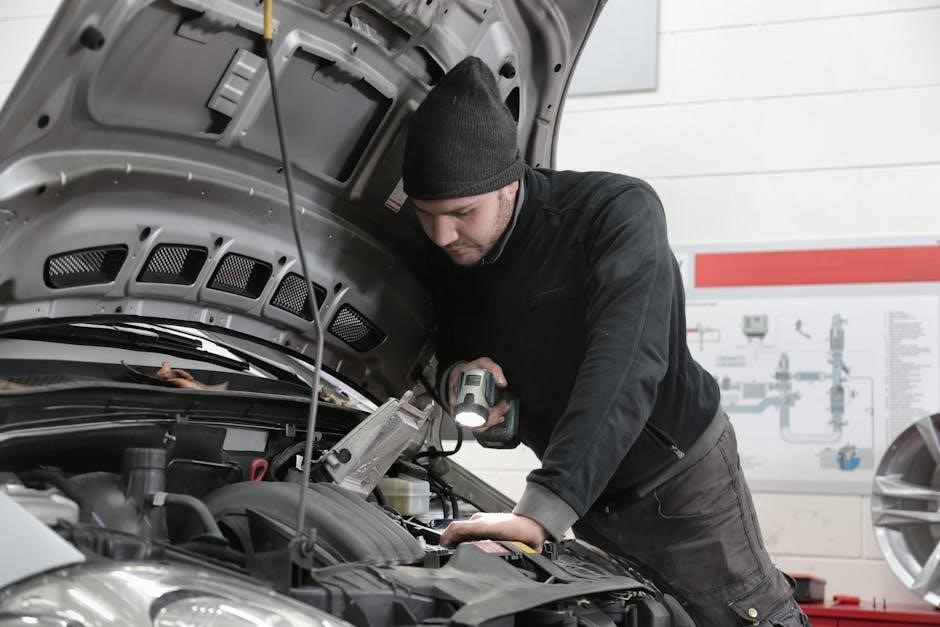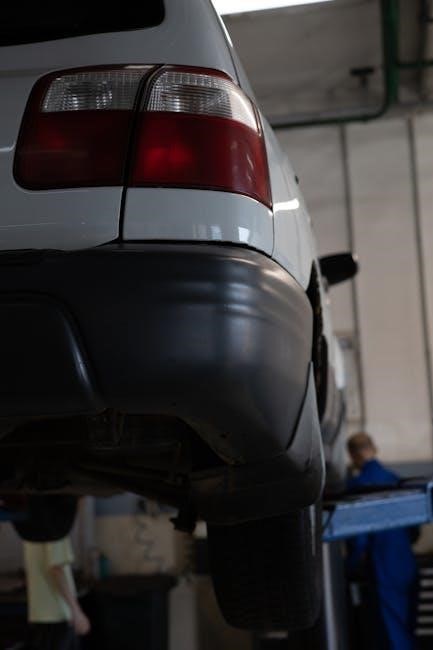Overview of Virginia State Vehicle Inspection Laws
Virginia state vehicle inspection laws are designed to ensure that all vehicles on the road are safe and meet certain standards. The laws require that all vehicles be inspected annually, and the inspection must be performed by a licensed inspector. The inspection process involves a thorough examination of the vehicle’s systems and components, including the brakes, suspension, steering, and exhaust system. The laws also require that vehicles meet certain emissions standards, and that they be equipped with certain safety features, such as working headlights and taillights. The Virginia State Police are responsible for enforcing the vehicle inspection laws, and they provide a checklist of the items that must be inspected. The checklist is available on the Virginia State Police website, and it can also be obtained by contacting the Safety Division. The laws are in place to protect the public and to reduce the number of accidents on the road. By ensuring that vehicles are safe and well-maintained, the laws help to prevent accidents and keep the roads safe for everyone. The inspection laws are an important part of Virginia’s efforts to improve road safety and reduce traffic accidents.

Importance of Vehicle Inspection in Virginia
Benefits of Regular Vehicle Inspection for Road Safety
The benefits of regular vehicle inspection are numerous, contributing significantly to road safety in Virginia. By ensuring that all vehicles are in good working condition, the risk of accidents caused by faulty vehicles is greatly reduced. This, in turn, leads to a decrease in the number of accidents on the road, making it safer for all drivers. Regular inspections also help to identify and address any potential issues before they become major problems, which can be costly to repair. Furthermore, regular vehicle inspections can help to prevent accidents caused by worn-out tires, faulty brakes, and other critical vehicle components. Overall, the benefits of regular vehicle inspections are clear, and it is essential for all vehicle owners in Virginia to prioritize this important aspect of vehicle maintenance, using resources such as the Virginia vehicle inspection checklist pdf, to ensure their vehicles are safe and roadworthy, every year.
Virginia Safety Inspection Manual and Requirements
Exceptions to Motor Vehicle Inspection Requirements in Virginia
There are certain exceptions to the motor vehicle inspection requirements in Virginia, including new vehicles, vehicles registered in other states, and vehicles that are exempt due to their age or type. The Virginia Department of State Police, Safety Division, provides information on these exceptions, which can be found on their official website or by contacting them directly. Vehicles that are exempt from inspection must still meet certain safety standards and may be subject to inspection at any time. It is important for vehicle owners to understand the exceptions and requirements for motor vehicle inspections in Virginia to ensure they are in compliance with state regulations. The Virginia vehicle inspection checklist pdf is available online and provides detailed information on the inspection requirements and exceptions. By reviewing this checklist, vehicle owners can determine if their vehicle is exempt from inspection and what steps they need to take to ensure their vehicle is safe and compliant with state regulations.
Inspection Requirements for Cars and Trucks in Virginia
Service Brakes and Brake System Inspection in Virginia
The service brakes and brake system inspection in Virginia is a critical component of the vehicle inspection process, ensuring the safety of drivers and passengers on the road. According to the official guidelines, the inspection must include a thorough examination of the brake system, including the brake pedals, brake pads, and brake drums. The inspector must also check for any signs of wear or damage to the brake system, including leaks or rust. The Virginia vehicle inspection checklist pdf provides a detailed outline of the requirements for the brake system inspection, including the necessary procedures and standards for evaluation. By following these guidelines, inspectors can ensure that vehicles on the road meet the minimum safety standards, reducing the risk of accidents and injuries. The inspection process is designed to be thorough and comprehensive, covering all aspects of the brake system to ensure public safety.

Virginia Vehicle Inspection Checklist for Passenger Vehicles
Tire Tread Depth Inspection and Requirements in Virginia

Obtaining a Copy of the Virginia Vehicle Inspection Checklist
Contact Information for Department of State Police, Safety Division in Virginia
The Department of State Police, Safety Division in Virginia provides essential contact information for vehicle owners to obtain a copy of the Virginia vehicle inspection checklist.
The mailing address is P.O. Box 27472, Richmond, VA 23261-7472, and the office address is 3719 Saunders Avenue, Richmond, VA 23227. The Department of State Police, Safety Division is responsible for ensuring road safety in Virginia, and their contact information is readily available on their official website.
Vehicle owners can visit the website to access the necessary forms and information to obtain a copy of the Virginia vehicle inspection checklist, which is required for all vehicles registered in the state.
The contact information provided by the Department of State Police, Safety Division is accurate and up-to-date, allowing vehicle owners to easily obtain the necessary documents.
The Virginia vehicle inspection checklist is an important document that ensures vehicles are safe to operate on the roads, and the Department of State Police, Safety Division plays a crucial role in maintaining road safety in Virginia.

on Virginia Vehicle Inspection Checklist and Road Safety
The Virginia vehicle inspection checklist plays a vital role in ensuring road safety in the state, and its importance cannot be overstated. By following the checklist, vehicle owners can help prevent accidents and reduce the risk of vehicle-related injuries and fatalities.
The Virginia Department of Motor Vehicles and the Department of State Police, Safety Division work together to enforce the vehicle inspection laws and regulations.
The ultimate goal of the Virginia vehicle inspection checklist is to promote road safety and protect the lives of all road users.
Vehicle owners are encouraged to familiarize themselves with the checklist and ensure their vehicles are properly inspected and maintained.
By doing so, they can contribute to a safer and more responsible driving community in Virginia.
The Virginia vehicle inspection checklist is a valuable resource that helps to prevent accidents and save lives, and its implementation is a crucial step towards achieving road safety in the state.







